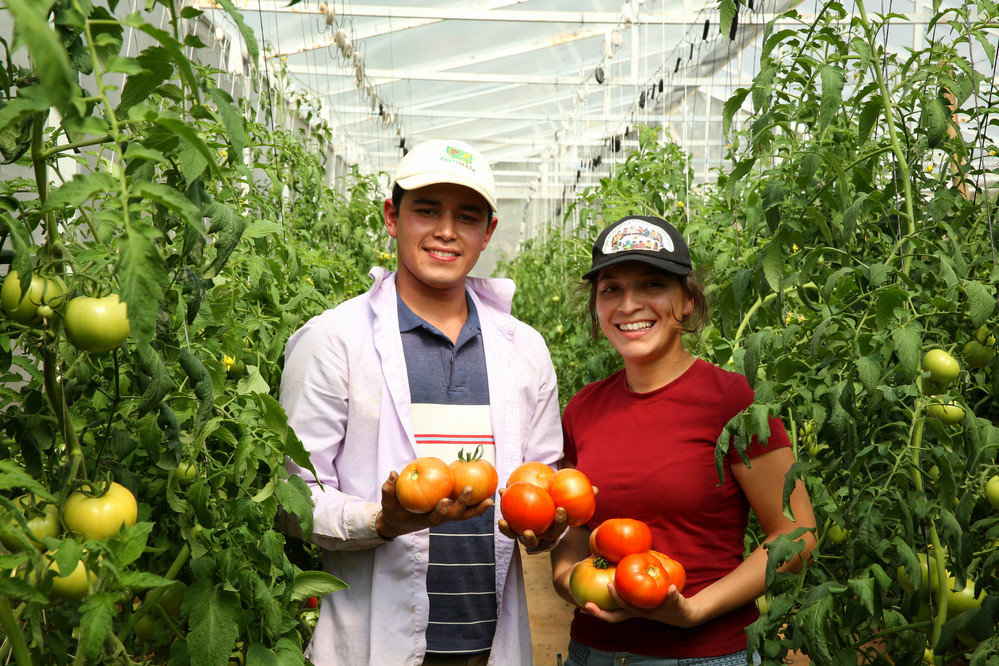Perspectives is a series that highlights emerging issues in the area of agri-SME and smallholder finance from the perspective of practitioners and thought leaders within and outside the SAFIN network. In this interview, Maria Teresa Zappia, Chief Investment Officer at BlueOrchard, an impact investment manager, tells us about how more private capital can be mobilized for investment in food and agriculture.

©IFAD/Carla Francescutti
Please tell us about BlueOrchard and your role there.
BlueOrchard is a leading impact investor that has been in the market for almost 20 years. We manage and structure funds across different impact investing themes. Our core theme has historically been financial inclusion, but over the past five years we have added others, such as education finance, climate finance, sustainable infrastructure, as well as technical assistance and capacity building.
As the Chief Investment Officer I am in charge of leading the Blended Finance and Impact Management team, which is organized around three main pillars: blended finance, technical assistance and impact management. We are responsible for fund management for all our blended finance mandates across the themes, as well as for implementing and monitoring the impact management framework of BlueOrchard and for providing technical assistance in these areas to our investees.
What type of investors do you mainly target in your work?
We have a wide range of investors, including both concessional and non-concessional finance providers. We work with public investors particularly in our blended finance funds. These can be bilateral cooperation agencies, bilateral or international financial institutions and development banks, all with a specific development mandate. We also work with a large group of private investors, ranging from smaller investors like foundations or family businesses to larger investors or institutional investors like pension funds, insurance companies and banks.
Recent data from GIIN suggests growing interest among impact investors in food and agriculture. Do you see this trend in the investors’ market you work with? If so, what is driving the trend in your view?
In our work on the InsuResilience Investment Fund, which provides access to insurance against climate change and extreme weather events for smallholder farmers, it has become clear that there is strong investor interest in insurance products which are related to the agriculture sector, particularly in areas such as crop or parametric insurance.
In terms of what drives the trend, it is likely that SDGs like zero hunger, no poverty and reducing inequality have helped drive attention to both challenges and investment opportunities in agriculture within rural economies in emerging markets. Technology development is another possible driver: we have seen in our portfolio that agri-tech developments attract potential investors to projects and companies. For example, one of our investees that develops weather data for smallholder farmers. The growing integration of new technologies into agriculture to inform decisions on environmentally friendly agricultural practices or ways to improve productivity, for instance, has certainly made the sector more attractive to investors.
Is there untapped potential for mobilizing finance from new types of investors for this sector? If so, what do you think is needed to unlock this potential?
We believe that current financial product offerings can be further developed to attract and leverage more private capital for investments in the sector. The challenge lies not so much in mobilizing private capital for investments downstream in the value chain but rather at the primary production level, especially for smallholder farmers. We often see that working in this segment of the value chain means small project sizes, and scaling up takes time.
Financial inclusion, given the growing number of intermediaries with large portfolios in agriculture finance, can play an important role in providing scale to an asset class that is often not quickly scalable. For this to happen, however, there is need to work on matching investment opportunities in the sector with investor expectations, in terms of risk, return and impact.
What role can an actor like BlueOrchard play in expanding the pool of choices that investors can make, thereby helping more finance flow into this sector?
One example is linking technology service providers to the agricultural sector. An example of this is one of our investee companies, Agritask, that takes technology closer to smallholder farmers. This is a less traditional way of generating impact in agriculture than being an active investor, but a very effective and innovative way to bring efficiency and environmental practices to agriculture. BlueOrchard introduces these companies to our network of investees with large agriculture portfolios and a lot of synergies can be built with this approach. Scaling up innovative approaches is what motivates our work and how we can really have long-term impact on the agri-ecosystem.
Maria Teresa Zappia, Chief Investment Officer at BlueOrchard

Maria Teresa Zappia is the Chief Investment Officer at BlueOrchard and leads the Blended Finance Impact Management team. She has worked in the emerging markets finance sector for over 20 years. She has worked for several development banks and financial institutions including the European Bank for Reconstruction and Development (EBRD), Asian Development Bank (ADB) and Overseas Development Institute (ODI).

